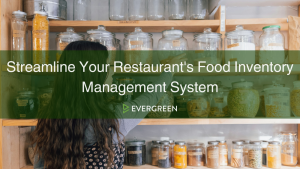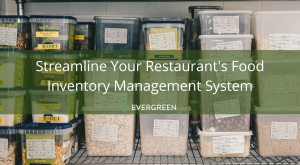The Only Restaurant Opening Checklist You’ll Ever Need

A comprehensive restaurant opening checklist is essential for successful operation every day. By following a checklist, your managers and team members can focus on serving customers and addressing the challenges of the day, rather than doubling up unnecessary training efforts or spending precious time and money on rote tasks.
Keep reading for your complete restaurant opening checklist, including front-of-house (FOH) and back-of-house (BOH) tasks.
Why Is a Restaurant Opening Checklist Important?
A restaurant opening checklist helps you organize and prioritize tasks, reducing the risk of overlooking important details. It ensures consistency in your operations and provides a framework for effective communication and coordination.
Restaurant opening checklists allow managers and leaders to delegate tasks and track progress effectively. They help in efficient inventory management, ensuring that the restaurant is well-prepared with necessary supplies. Checklists also ensure compliance with health and safety regulations, minimizing the risk of penalties and legal issues.
Reliable checklists are tangential to responsibilities like training staff on customer service, food safety, and standard operating procedures. By following each checklist, all restaurant staff produce great results for operations, leading to improved customer satisfaction and more predictable revenue.
9 Restaurant Opening Checklists
Every seasoned restaurateur knows that the success of a day often starts way before your first customer strolls in. A proper morning routine isn’t just for yoga enthusiasts and caffeine addicts; it’s an integral part of restaurant operations too.
Here’s a mind-boggling stat for you: 80% of restaurants that maintain a daily opening checklist see improved efficiency and reduced operation errors.
Ready to step up your game? Let’s dive in.
1. Early Morning Inspection
When dawn’s first light breaks, it’s not just about catching the sunrise. Your restaurant’s ambiance sets the tone for the entire day.
And before you dive into the chaos, a safety sweep ensures that you’re setting up a scene that’s as secure as it is welcoming. Here’s what to do:
Ambiance Check:
- Dim or brighten the lights to the desired setting.
- Test sound systems and select the morning playlist.
- Adjust the thermostat to a comfortable temperature for guests.
- Check any decorative elements like candles or centerpieces.
- Ensure bar signage (daily specials, announcements) is clearly visible.
Safety Walkthrough:
- Inspect entrance and exit points for obstructions.
- Walk all pathways and dining areas for hazards.
- Check emergency equipment: fire extinguishers, alarms.
- Inspect kitchen for potential hazards (loose cords, gas leaks).
- Make sure storage areas are organized and not overfilled.
2. Cleanliness Patrol
First impressions last a lifetime! Whether it’s a restroom that speaks of care or a dining area that invites guests in, cleanliness is more than a task—it’s a testament to your establishment’s dedication. Leverage the following steps:
Restrooms:
- Wipe down all surfaces.
- Refill soap, tissues, and hand sanitizers.
- Empty trash bins.
- Check toilet functionality.
- Ensure the floor is dry and clean.
Dining Area(s):
- Wipe down all tables and chairs.
- Realign seating to maintain pathways.
- Clean windows and other glass surfaces.
- Sweep and mop the floor.
- Replace any worn-out menus.
Kitchen:
- Sanitize countertops and workspaces.
- Clean grills, stovetops, and ovens.
- Check cleanliness of fridges and storage areas.
- Ensure all tools and equipment are sanitized.
- Inspect floor for spills and cleanliness.
3. Gear Up Your Kitchen
The kitchen: the beating heart of any culinary haven. This is where the magic happens. But before the curtain rises, it’s crucial to ensure that every tool, every ingredient is ready to play its part in your restaurant’s symphony. Use the following checklists:
Equipment:
- Turn on and test all equipment for functionality.
- Check for any unusual noises or malfunctions.
- Ensure all equipment is clean and ready for use.
- Verify that digital displays on equipment show correct settings.
- Keep the equipment manual handy for quick troubleshooting.
Mise en Place:
- Lay out and organize all ingredients for easy access.
- Pre-cut vegetables, proteins, and other essentials.
- Organize spices and condiments.
- Check the freshness of perishable items.
- Set aside ingredients for daily specials.
4. Front of the House Prep
Your front-of-house team is the bridge between the kitchen’s artistry and your guest’s experience. A well-informed team, streamlined tech, and perfectly set tables are the foundation of service that leaves a lasting impression. Here’s what to do next:
Staff Briefing:
- Share reservation details and special requests.
- Discuss daily specials and potential allergens.
- Highlight any out-of-stock items.
- Discuss goals or focuses for the service period.
- Address any staff concerns or questions.
POS Systems:
- Turn on and test system functionality.
- Update with any new menu items or pricing.
- Ensure printers are working and stocked with paper.
- Test card readers.
- Backup transaction data from the previous day.
Table Settings:
- Set up tables with fresh linens.
- Arrange silverware, glassware, and plates.
- Place menus and any promotional material.
- Refill condiments or tableside essentials.
- Check cleanliness and presentation of each setting.
5. Back of House Prep
Without a doubt, a well-organized, clean BOH is the difference between satisfied, returning guests and those who leave less-than-favorable reviews. Here’s how to prepare it:
- Check all emergency exits to ensure they’re clear and accessible. Verify fire extinguishers and other safety equipment are in place and functional.
- Turn on essential kitchen appliances like ovens, grills, and fryers. Ensure they reach and maintain the proper temperatures.
- Confirm that handwashing stations are stocked with soap and clean towels. Remind staff about the importance of frequent handwashing.
- Organize and clean all prep stations, ensuring they’re equipped with necessary tools and ingredients for the day’s service.
- Review the inventory for freshness. Rotate stock using the First In, First Out (FIFO) method and discard any items past their prime.
- Review any daily specials and ensure ingredients and recipes are on hand and known by the culinary team.
- Gather the kitchen staff for a briefing. Discuss the day’s menu, any expected busy times, and address any concerns or feedback.
- Organize and clean the dishwashing station, ensuring detergents are stocked and the machine is functional.
- Empty all trash and recycling bins. Place fresh liners in each bin and ensure there’s a system in place for regular disposal throughout the day.
- Do a walk-through of the entire kitchen area, ensuring cleanliness and organization. Address any issues immediately before opening.
6. Stock-Up Station
Every great drink, every perfectly timed dish hinges on a well-stocked station. The bar isn’t just about drinks—it’s about crafting memories.
And for the servers, a stocked station means they’re equipped to meet every diner’s needs, big or small. Use the following steps for success:
Bar:
- Restock liquors, mixers, and garnishes.
- Clean glasses and bar equipment.
- Check the functionality of draught systems or taps.
- Refill ice and ensure cooler temperatures.
- Update and display any drink specials.
Service Stations:
- Stock up on napkins, cutlery, and straws.
- Ensure availability of condiments, sauces, and other essentials.
- Refill beverage stations.
- Organize and replenish service tools.
- Clean and sanitize station surfaces.
7. Bite into Tech
In our digital age, a restaurant’s tech ecosystem is as vital as its finest dish. Reliable Wi-Fi, a seamless reservation system, and instant feedback mechanisms ensure you’re not just serving meals but experiences. Here’s what you need to do:
Wi-Fi:
- Test connection on various devices.
- Restart router if necessary.
- Ensure a secure password is available for staff or guests.
- Monitor usage to avoid slow-down during peak hours.
- Have IT support contacts handy.
Reservation System:
- Review the day’s reservations.
- Note any special requests or allergies.
- Confirm any large party arrangements.
- Update system with any cancellations or changes.
- Print a copy for front-of-house reference.
Feedback Systems:
- Reset devices to their start screen.
- Ensure devices are fully charged or charging.
- Clear any previous feedback or responses.
- Test submission functions.
- Update with any new survey questions or prompts.
8. Personal Touches
It’s these tiny tweaks that turn first-timers into regulars. A thoughtfully curated playlist, an outdoor area ready for every season—these personal touches transform a meal into a moment, making your patrons feel truly special. Don’t neglect these final checklists:
Music Playlist:
- Review the day’s playlist.
- Add or remove tracks based on feedback.
- Check volume levels in different sections of the restaurant.
- Have a backup playlist ready.
- Update seasonally or for special events.
Outdoor Area:
- Clean and align outdoor seating.
- Check outdoor lighting or candles.
- Ensure heating/cooling elements are functional.
- Clean and set outdoor tables.
- Display any outdoor promotional signage.
9. Final Check
Put on the shoes of your customer. Walk in, sit down. Feels good? Then it’s time to open!
The routine you and your team just went through isn’t merely a grouping of tasks—it’s a ritual. It’s the dedication, the prep talk before the game, the unsung grind behind those shining Google and Yelp reviews.
So, adapt, evolve, and perfect this checklist to fit your eatery’s unique pulse. Cheers to creating delightful dining, one morning at a time!
Ensuring Smooth Operation
Following our restaurant opening checklists helps identify any potential issues or bottlenecks before opening day, allowing for timely resolutions. Regularly training your staff on customer service, food safety, and standard operating procedures (SOPs) ensures that they are well-prepared to provide excellent service to guests on a daily basis.
Periodically checking and maintaining your kitchen equipment ensures that it’s in proper working order, minimizing downtime. Remember to also create a marketing plan and promote your restaurant through the most relevant digital channels to generate buzz and attract customers.
The Value for New Hires
A restaurant opening checklist also offers clear instructions and expectations for new hires, helping them quickly adapt to their roles. It ensures that all employees are on the same page and aware of their responsibilities, promoting teamwork and long-term success.
Following a structured training program that complements your checklists helps new hires build a strong foundation in restaurant operations. By following each checklist, new hires can learn and understand the standard operating procedures of the restaurant, ensuring consistency in operations.
The Bottom Line
A restaurant opening checklist is an invaluable tool for ensuring a successful and well-organized opening. By following the comprehensive checklist provided, managers, leaders, and new hires can navigate the opening process with confidence. Regularly reviewing and updating the checklist will help adapt to the changing needs of the restaurant and industry. Take your hospitality establishment revenue to the moon with our complete bar and restaurant menu software and customer loyalty tools. Request a demo now to see it in action or reach out to our team with any questions you have.


